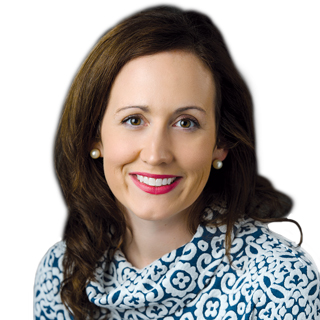
Thursday, Aug. 17 was more than just the first day of school for my children. It was what I cheerfully referred to as “Mommy’s Freedom Fest Day”!
With all five now in school, it was the first day in 10 years during which we did not have a child at home.
The first day ever I joined other school mothers after drop-off for coffee.
And best of all, it was the day I received a notice from our Home Owners Association (HOA) that our children were a general “nuisance to the neighborhood.”
The compliant came with more detail that the HOA had been notified that we “may” be riding ATVs in the neighborhood green space.
Well, there is no maybe to it.
And furthermore, there is a concern that someone may get hurt.
Too late for that, but we better stay tight-lipped regarding the air bound tricks off dirt bikes, and the four-wheelers crashed directly into the creek bank. Easy on that throttle.
I must admit that I myself have pleaded with my husband, on many occasions, to fence in the backyard and gain more control over these kids. He always gives me the same response: “You know good and well you can’t tie this bunch down, or fence them in. They will just break free.”
The Centers for Medicare & Medicaid Services has a similar aim to increase person-centered care and freedom of movement, with October MDS Changes impacting Section P: Restraints, which will soon be referred to as “Restraints and Alarms,” including options for personal alarms which have been added to item P0200
Additionally, the State Operations Manual further clarifies the need to allow freedom of movement with language in F-tag F604 (Respect and Dignity)
• §483.10(e)(1) The resident has the right to be free from any physical or chemical restraints imposed for purposes of discipline or convenience, and not required to treat the resident’s medical symptoms, consistent with §483.12(a)(2).
• §483.12(a)(2) Ensure that the resident is free from physical or chemical restraints imposed for purposes of discipline or convenience and that are not required to treat the resident’s medical symptoms. When the use of restraints is indicated, the facility must use the least restrictive alternative for the least amount of time and document ongoing re-evaluation of the need for restraints.
The intent of these requirements is for each resident to attain and maintain his/her highest practicable well-being in an environment that:
• Prohibits the use of physical restraints for discipline or convenience;
• Prohibits the use of physical restraints to unnecessarily inhibit a resident’s freedom of movement or activity; and
• Limits physical restraint use to circumstances in which the resident has medical symptoms that may warrant the use of restraints.
What are some ways your facility can allow for greatest freedom of movement?
To begin, the entire interdisciplinary team must complete a thorough resident assessment to identify strengths and areas for improvement, including life habits, daily routine, activities of daily living, mood and attitude, memory, communication, disease process and progression, and medications. Once your team understands these areas, the team can start developing a care plan to better meet the resident’s needs without the use of restraints.
Furthermore, interventions may include:
• Decreasing the risks associated with resident wandering by assessing all the external risk factors related to falls
• Accepting the fact that restless, anxious residents must be allowed to walk when able.
• Educating staff on managing agitated/disruptive behavior
• Nurturing positive staff/resident/family relationships
• Allowing physical and diversionary activity such as exercise, outdoors time, activities that residents would like to do, small jobs agreed to by the resident
• Utilizing environmental approaches, including good lighting, reducing glare and individualized seating
• Meeting the individual’s physical needs including hunger, toilet use, sleep, thirst and exercise
As far as gaining more control over free-range children, I wish all our neighborhood pack more summers like the one they enjoyed in 2017.
Summers where every water hose is a community water hose and open for filling water guns, blowup pools, slipping slides, or for a quick drink of water.
Where front doors are always open and children run freely from house to house and yard to yard.
And where mothers fill pantries with goldfish, bread, and peanut butter; stock fridges with enough bologna and hot dogs to feed an army; and someone always has a freezer stuffed with popsicles.
Restraint-free, sounds good to this mommy.
Renee Kinder, MS, CCC-SLP, RAC-CT currently serves as Director of Clinical Education for Encore Rehabilitation (insert: www.encorerehabilitation.com) and acts as Gerontology Professional Development Manager for the American Speech Language Hearing Association (ASHA).




